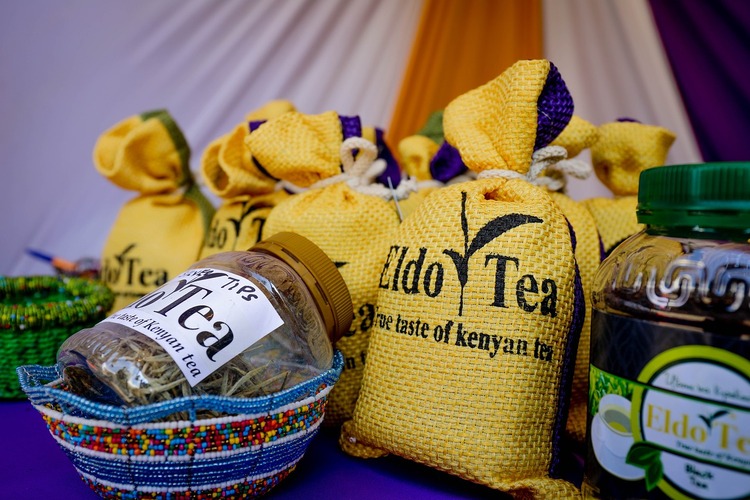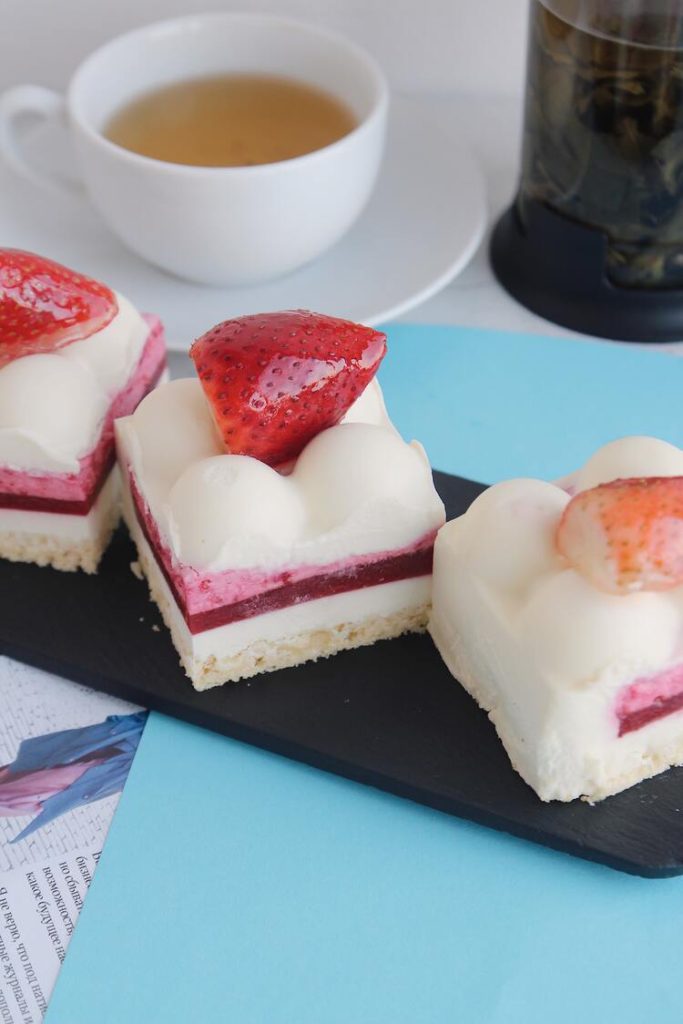What is purple tea? This relatively new type of tea has been gaining popularity in recent years. This tea is produced from a particular cultivar of the tea plant, which is grown at high altitudes in the Kenyan highlands. The name comes from the plant’s distinct purple color.
One of the unique properties of purple tea is its high anthocyanin content, which is responsible for its purple color. Anthocyanins are a type of flavonoid known for their antioxidant properties and linked to a range of health benefits. It is also known to have a lower caffeine content than other types of tea, making it a great option for those sensitive to this stimulant.
If you want to learn more about purple-leaf tea, keep reading since we have a lot of information to share.
Please note: This article contains affiliate links, meaning I may earn a commission if you make a purchase by clicking a link. Of course, this comes at no extra cost to you and helps me keep offering readers solid information.

What is Purple Tea?
Purple tea comes from the Camellia sinensis plant, the same plant used to produce other types of tea. However, the tea is made from cultivars with a different genetic makeup that causes the leaves to appear purple.
These cultivars were primarily developed in Kenya, which has become a leading producer of purple tea. TRFK 306/1 (Purple 1) is one of the earliest tea cultivars developed. It is known for its high anthocyanin content, giving the leaves a distinctive purple color. TRFK 306/1 is widely planted in the country’s tea gardens.
Small-scale farmers in Kenya grow the purple tea cultivar alongside other tea cultivars. This tea plant requires similar cultivation practices as other tea cultivars. It is grown in high-altitude areas with well-draining soils and receives plenty of rainfall. The tea plant is usually pruned to encourage new growth and to maintain its shape.
Purple tea can be processed into various types, such as black, green, or white tea, each offering distinct flavors and characteristics. As with other teas, it can be enjoyed hot or cold, with or without added sweeteners or milk, depending on personal preference.
Characteristics of Purple Tea
Here are some of the characteristics that make purple tea stand out:
- Coloration: The leaves of purple tea have a purple hue, which is due to the presence of anthocyanins. When brewed, the tea has a light purple color that is pleasing to the eye.
- Flavor and Aroma: This tea has a sweet and earthy flavor profile with a hint of astringency. It has an aroma that is reminiscent of blueberries and red cabbage.
- Anthocyanin Content: Also this type of tea has a high concentration of anthocyanins, which are a type of flavonoid that is also found in blueberries and grapes. These compounds are known for their antioxidant properties and may have health benefits.
- Low Caffeine Content: Purple tea has a lower caffeine content than other tea types.
- Unique Taste: This tea has a distinct flavor profile that is different from other types of tea. It is sweet and smooth, with a slight earthy taste that is not overpowering.

Preparation and Consumption of Purple Tea
To prepare purple tea, you must follow similar steps when brewing other types of tea. However, you should be aware of some differences in the brewing process.
To brew, heat water to around 185°F (85°C). This is slightly cooler than water’s boiling temperature, typically used for black tea. Then, add one teaspoon of loose-leaf tea to a tea infuser or strainer and place it in your cup.
Pour the hot water over the tea leaves and let them steep for 3-4 minutes. You can adjust the steeping time to your preference, but be careful not to over-steep the tea as it can become bitter.
Once the tea has steeped, remove the infuser or strainer and enjoy. You can also add honey or lemon to enhance the flavor if desired.
If you prefer iced tea, brew it as usual, then add ice to the cup and let it cool down before enjoying it. In this case, you may want to steep the tea leaves longer or use more than a teaspoon (so the flavor does not dilute as the ice melts).
Food Pairings
Pairing purple tea with complementary foods can enhance the overall tasting experience.
Fruits
The tea’s health benefits can be complemented with antioxidant-rich fruits like blueberries, raspberries, strawberries, or blackberries.
Nuts
Almonds, cashews, and pistachios can make excellent accompaniments since nutty flavors and creamy textures can complement the tea’s characteristics.
Cheese
Soft cheeses like brie or goat cheese can pair nicely with purple tea. These cheeses’ creaminess and subtle tang can balance the tea’s flavors.
Light Pastries
Tea offers a refreshing contrast to the sweetness of light pastries such as scones, muffins, or shortbread cookies.
Light Salads
A fresh and light salad, such as mixed greens with vinaigrette dressing, can be an excellent option to enjoy with purple tea during lunchtime.

Health Benefits of Purple Tea
Here are some of the ways purple tea can support your health:
- Antioxidants: Rich in antioxidants, which help to protect your cells from damage caused by free radicals. This can help to reduce your risk of chronic diseases such as cancer, heart disease, and neurodegenerative diseases.
- Polyphenols: Contains polyphenols, which are a type of antioxidant that has been linked to a range of health benefits. Polyphenols can help to reduce inflammation, improve cardiovascular health, and support cognitive function.
- Inflammation: Has anti-inflammatory properties, which can help to reduce inflammation throughout your body. This can help to reduce your risk of chronic diseases such as heart disease, diabetes, and neurodegenerative diseases.
- Cardiovascular health: May help improve cardiovascular health by reducing inflammation, blood flow, and risk of heart disease.
- Bacteria: This tea has antibacterial properties, which can help to reduce the growth of harmful bacteria in your gut. This can help to improve your digestion and support your immune system.
- Cholesterol: May help to reduce LDL cholesterol levels, which can help to improve your cardiovascular health.
- Cognitive function: May help to support cognitive function by improving blood flow to the brain and reducing inflammation.
Economic Impact
Purple tea has had a significant economic impact on the regions where it is grown. The tea is primarily grown in the high-altitude regions of Kenya’s Rift Valley, where the cool climate and rich volcanic soil provide ideal growing conditions. The tea is grown on small farms, and most farmers are smallholders.
The production of this tea has created employment opportunities for many people in the region, from the farmers who grow the tea to the workers who process it. The tea is processed using a rolling and oxidation method, which involves rolling the tea leaves and allowing them to oxidize before they are dried. This process requires skilled labor, and the workers who perform it are highly valued.
The Kenya Agricultural and Livestock Research Organization (KALRO) has been instrumental in developing purple tea. KALRO has conducted extensive research on the tea, including developing new cultivars and improving the processing methods. This research has helped improve the tea’s quality and increase its marketability.
The demand for this tea has been steadily increasing in recent years, both domestically and internationally. The tea is sold as loose-leaf and is often marketed as a premium product due to its unique flavor and health benefits. The high demand for tea has resulted in higher prices for the farmers who grow it, which has helped improve their living standards.
Buying Recommendations
You can acquire this tea at specialized tea shops or online. Keep in mind purple tea is often sold in blends. Read the product of interest ingredient list to understand the contents before buying.
If you are considering buying online, please consider the following recommendations.
Chixotic Purple Whole Leaf Tea from Kenya




Frequently Asked Questions
What are the health benefits of drinking purple tea?
This tea contains high levels of antioxidants, which can help boost your immune system and protect your body against free radicals. It also contains anthocyanins, which have been linked to reducing the risk of chronic diseases such as heart disease, diabetes, and cancer.
Is purple tea a good option for weight loss?
While no magic tea can guarantee weight loss, drinking purple tea can be a good addition to a healthy diet and exercise routine. This tea contains catechins, which can help boost metabolism and aid in weight loss.
What makes purple tea different from other types of tea?
Purple tea is unique because it is grown in high-altitude regions of Kenya and has a distinct purple color. It is also a low-caffeine tea with a smooth, sweet taste and floral undertones.
Does purple tea contain caffeine?
This tea contains a lower amount of caffeine than other tea types. On average, it has about 15-20 mg of caffeine per cup, about half the amount of caffeine in a cup of green tea.
What is the flavor profile of purple tea?
This tea has a smooth and sweet taste with floral undertones. It is often described as having a unique taste that is not bitter or astringent like other types of tea.
What are some interesting facts about purple tea?
Purple tea is a relatively new type of tea, having only been discovered in the early 2000s. It is grown in Kenya’s high-altitude regions, giving it a unique flavor profile. Tea leaves also contain high levels of anthocyanins, giving it its distinct purple color and health benefits.

Have you heard about this tea?
More About Tea
What Does Green Tea Taste Like?
The Process of Making Green Tea